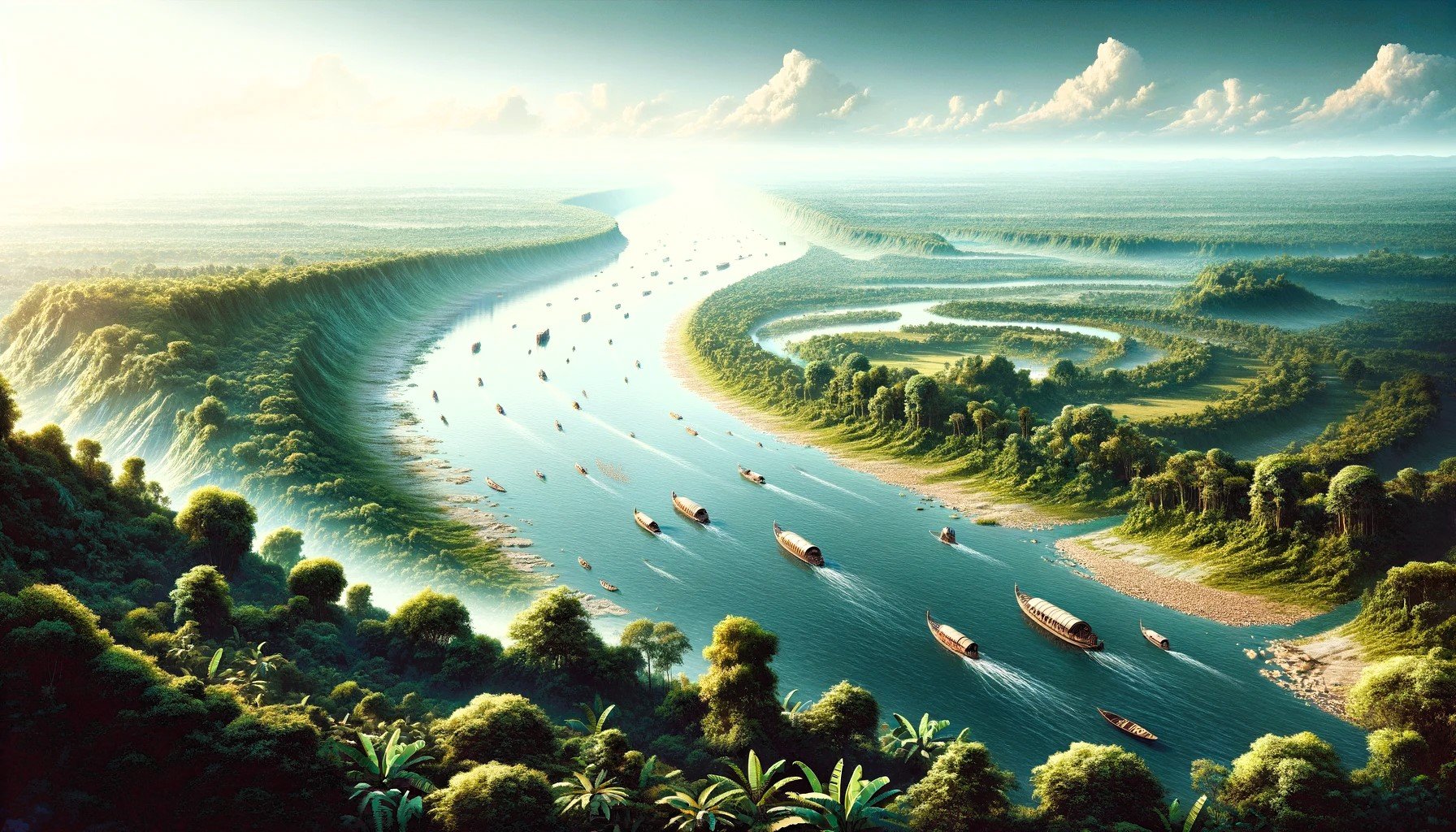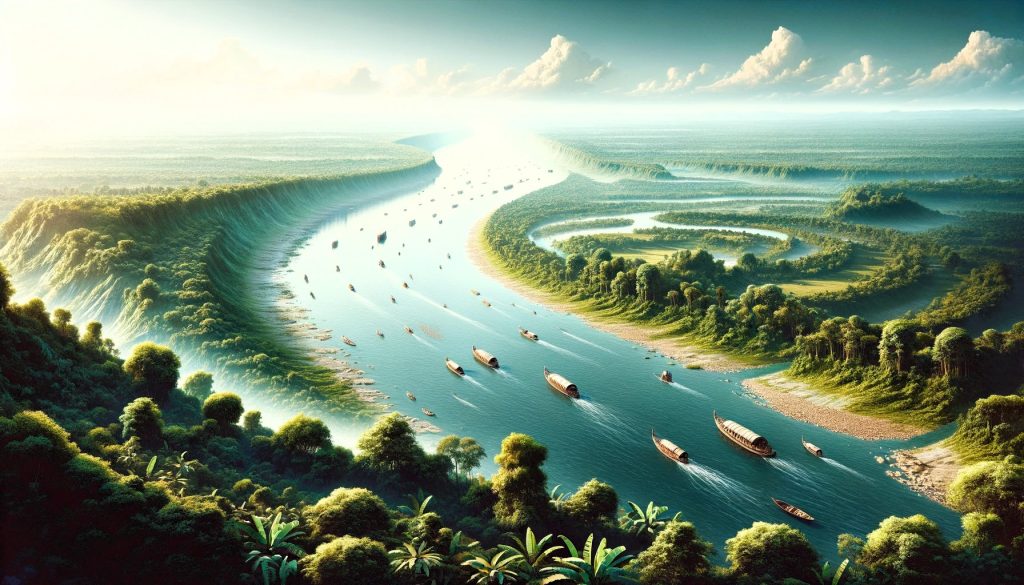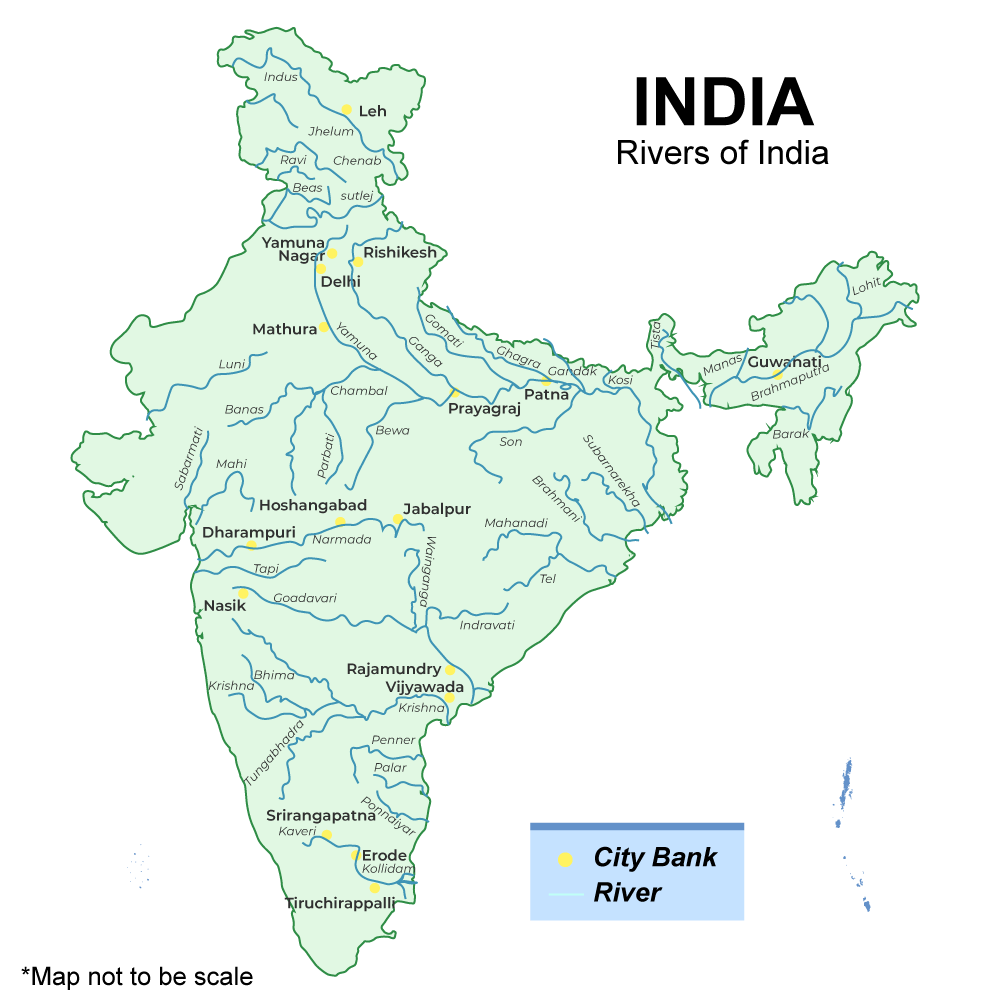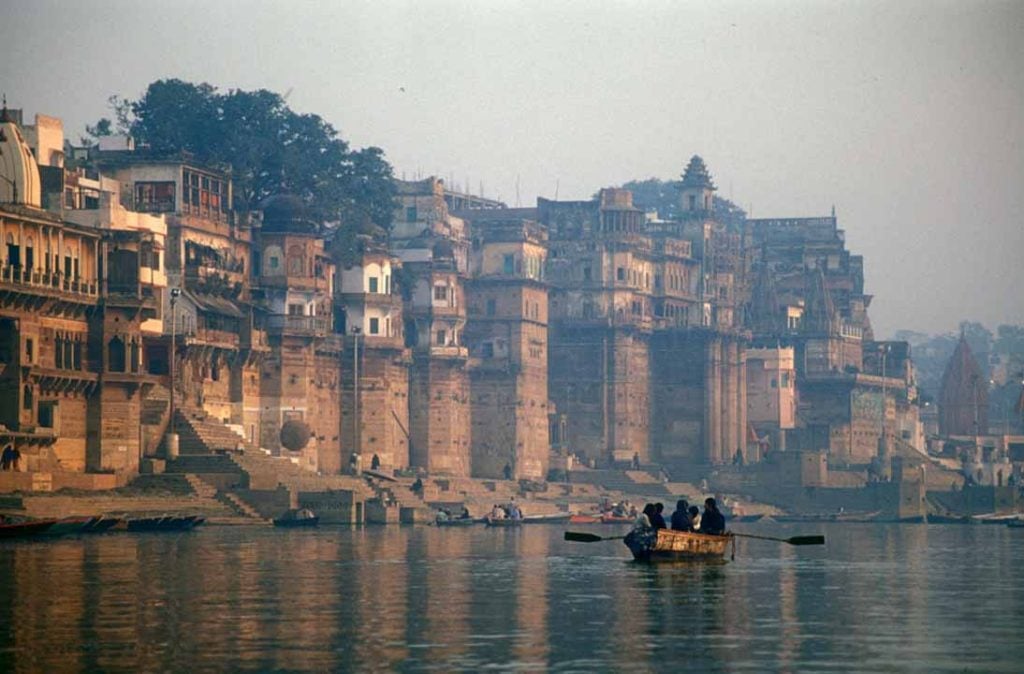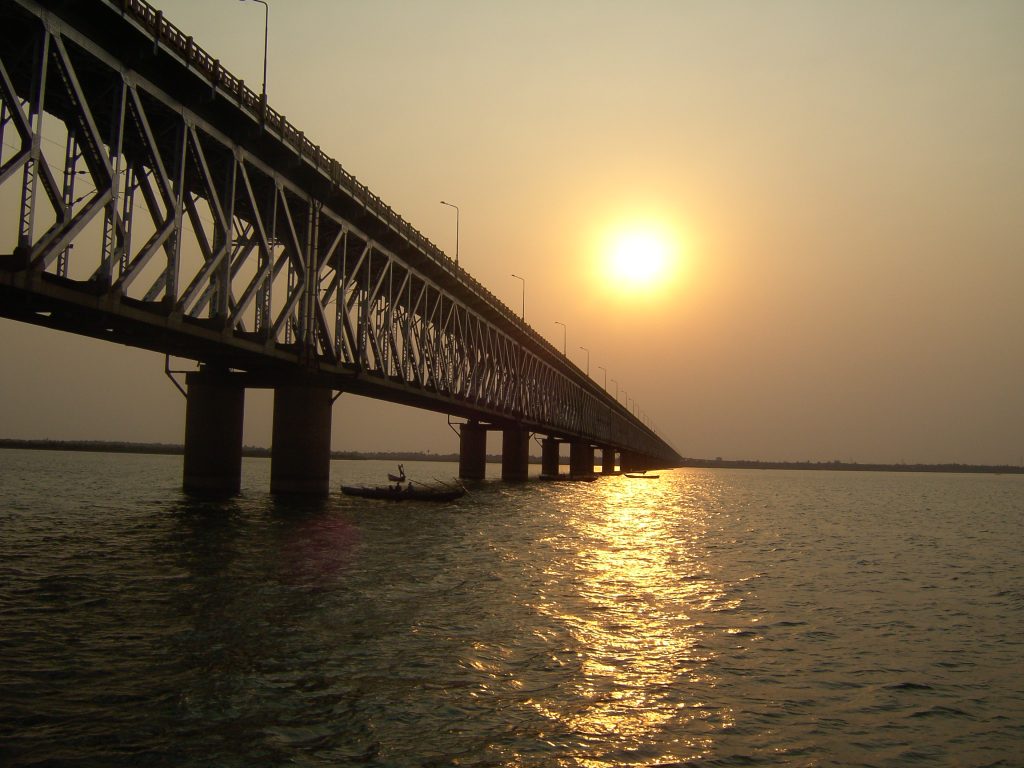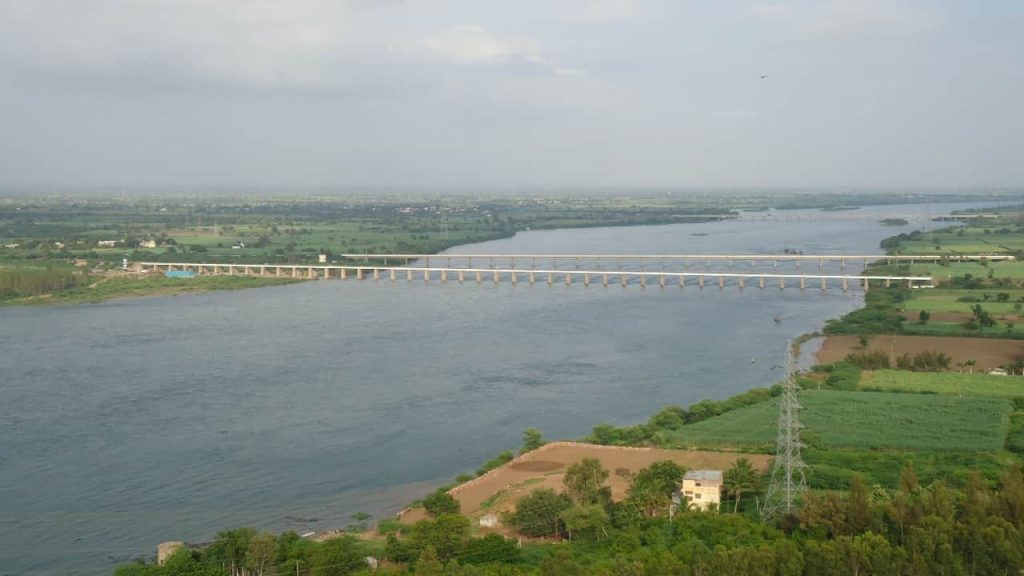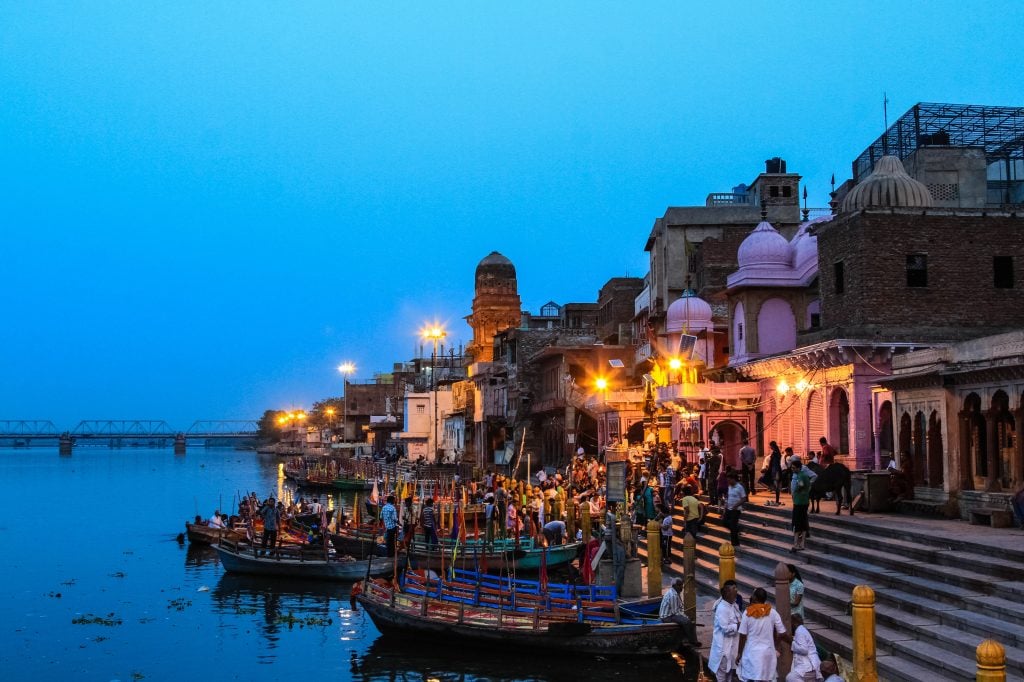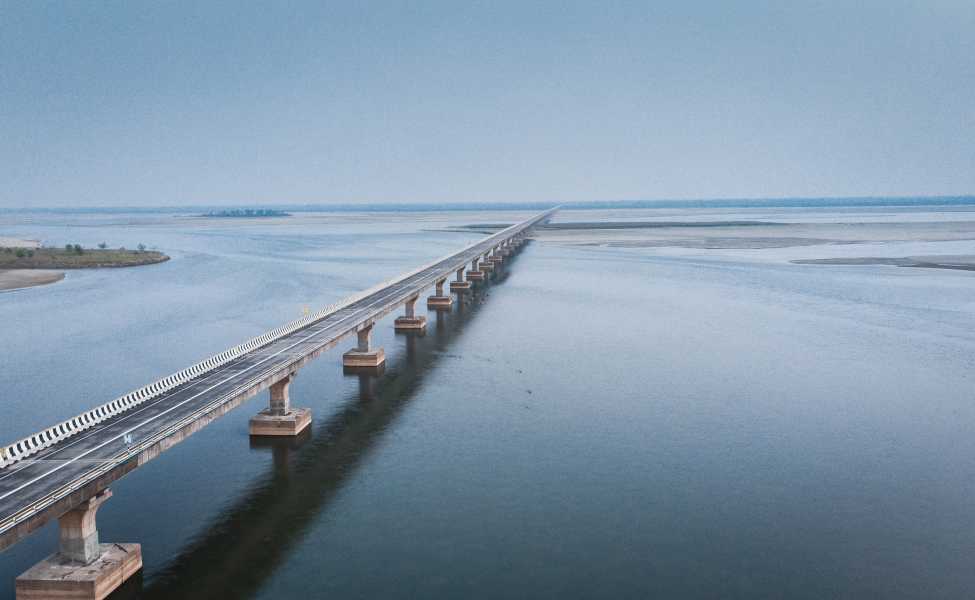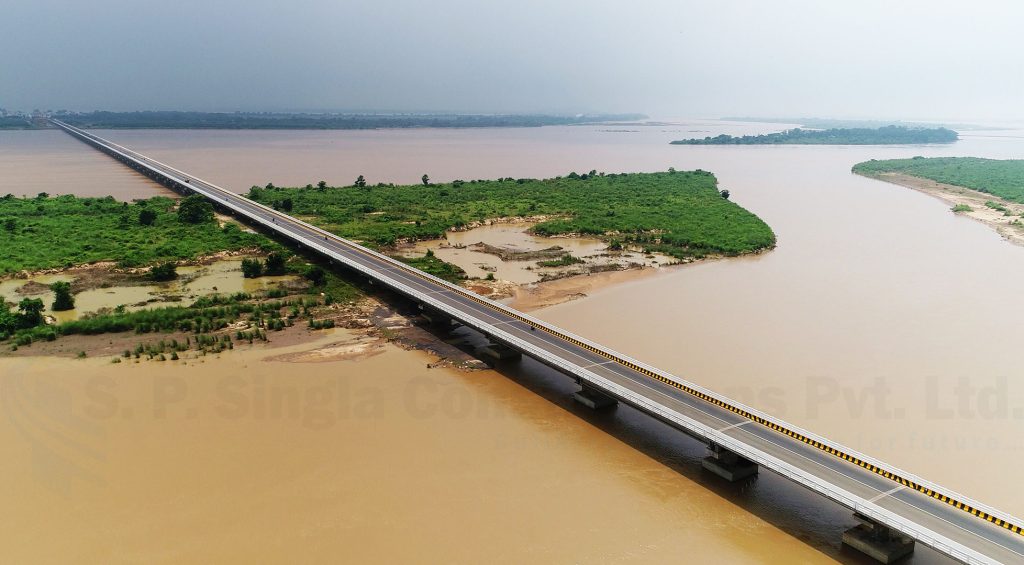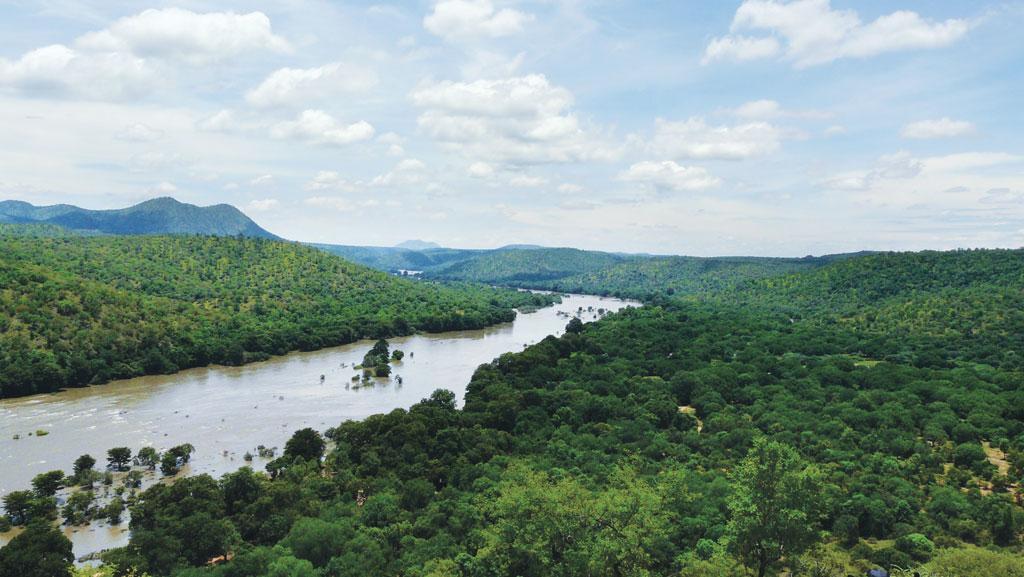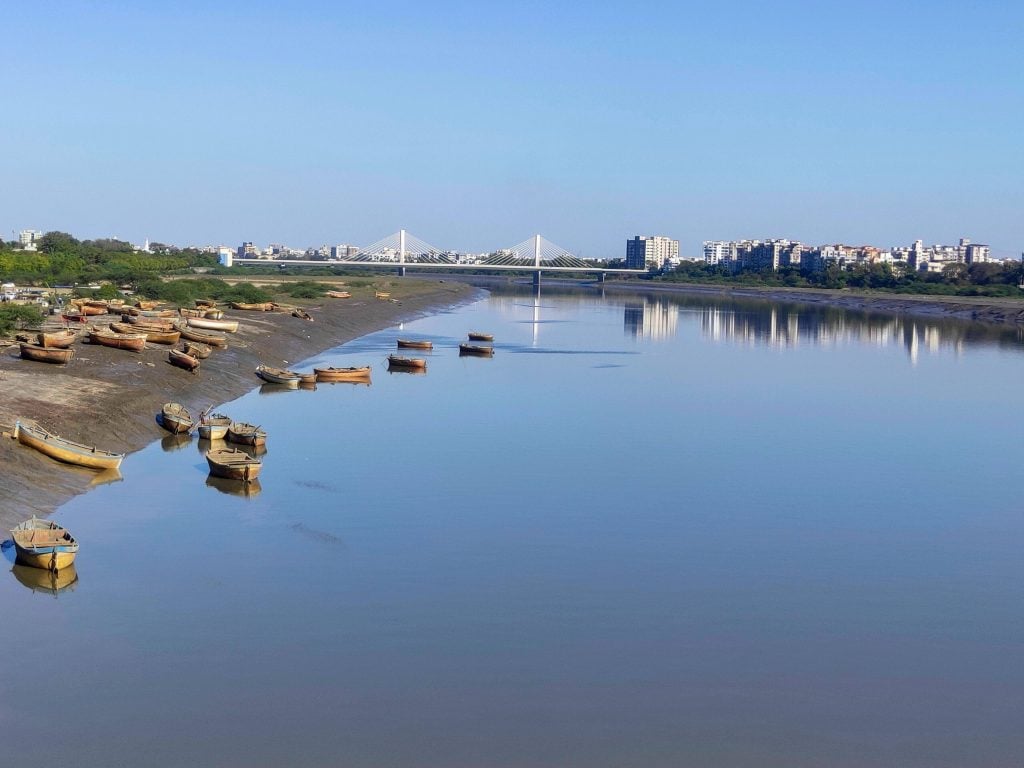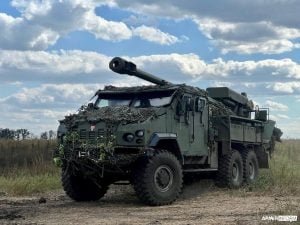In this comprehensive exploration, we delve into the fascinating world of India’s longest and largest rivers, uncovering their unique stories, origins, and the vital roles they play in the nation’s ecosystem.
Prepare to be captivated by the sheer grandeur and significance of these natural wonders that have stood the test of time.
Longest River in India
| River | Length in India (km) | Total Length (km) |
| Ganga | 2525 | 2525 |
| Godavari | 1464 | 1465 |
| Krishna | 1400 | 1400 |
| Yamuna | 1376 | 1376 |
| Narmada | 1312 | 1312 |
| Indus | 1114 | 3180 |
| Brahmaputra | 916 | 2900 |
| Mahanadi | 890 | 890 |
| Kaveri | 800 | 800 |
| Tapti | 724 | 724 |
1. The Mighty Ganga: India’s Longest River
Emerging from the Gangotri Glacier in the Uttarakhand region, the Ganga River, also known as the “Ganges,” is the longest river in India, stretching an impressive 2,525 kilometers. As it flows through the Gangetic plain, this sacred waterway nourishes the lives of millions, serving as a vital lifeline for the northern states of Uttarakhand, Uttar Pradesh, Bihar, and West Bengal. The Ganga’s right bank tributaries, including the Yamuna, Son, Damodar, and Punpun, as well as its left bank tributaries, such as the Gomti, Ghaghra, Gandak, Kosi, and Mahananda, contribute to its immense volume and influence.
2. Godavari: The “Dakshina Ganga” of Southern India
Flowing through the heart of the Deccan Plateau, the Godavari River is the second-longest river in India, measuring 1,465 kilometers in length. Originating from the Western Ghats in Maharashtra, this majestic waterway is often referred to as the “Dakshina Ganga,” or the “Ganges of the South.” The Godavari’s vast basin, covering approximately 10% of India’s total geographical area, makes it a crucial resource for the states of Maharashtra, Telangana, Andhra Pradesh, and Chhattisgarh. Its left bank tributaries, such as the Pranhita, Purna, Sabari, and Indravati, as well as its right bank tributaries, including the Manair, Pravara, and Manjira, contribute to its impressive flow.
3. Krishna: The Sacred River of the Deccan
Emerging from the Western Ghats near Mahabaleshwar in Maharashtra, the Krishna River is the third-longest river in India, stretching 1,400 kilometers. As it flows eastward through the Deccan Plateau, the Krishna River is joined by a network of tributaries, including the Tungabhadra, Bhima, Musi, Ghataprabha, and Malaprabha, making it the fourth-largest river basin in the country. The Krishna’s importance extends beyond its sheer size, as it holds deep cultural and religious significance for the people of Maharashtra, Andhra Pradesh, and Karnataka.
4. Yamuna: The Mighty Tributary of the Ganga
The Yamuna River, the longest tributary of the Ganga, flows for 1,376 kilometers before merging with its parent river at Triveni Sangam in Prayagraj, Uttar Pradesh. Originating from the Yamunotri Glacier in the Uttarakhand Himalayas, the Yamuna is a vital water source for the northern states of Uttarakhand, Himachal Pradesh, Haryana, and Uttar Pradesh. Its right bank tributaries, such as the Betwa, Chambal, and Ken, as well as its left bank tributaries, the Sharda and Hindon, contribute to the Yamuna’s significant discharge.
5. Narmada: The Lifeline of Central India
Emerging from the Amarkantak Plateau in Madhya Pradesh, the Narmada River is the longest west-flowing river in India, spanning 1,312 kilometers. Flowing through the rift valley between the Satpura and Vindhya mountain ranges, the Narmada is a crucial resource for the central Indian states of Madhya Pradesh and Gujarat. Its right bank tributaries, including the Choral, Hiran, and Tendoni, as well as its left bank tributaries, such as the Sher, Karjan, and Banjar, feed into this majestic river.
6. Indus: The Transboundary Giant
The Indus River, originating in Tibet, China, is the longest river in India, covering a total length of 3,180 kilometers. However, within the Indian borders, the Indus River flows for 1,114 kilometers before entering Pakistan. This antecedent river has maintained its course through the rising Himalayan terrain, cutting through the mountains and carving a path across the northern regions of India. The Indus River Basin, one of the world’s largest, is fed by a network of right bank tributaries, including the Gilgit, Zhob, Shyok, Hunza, and Gomal, as well as left bank tributaries such as the Zanskar, Jhelum, Suru, Chenab, Soan, and Luni.
7. Brahmaputra: The Mighty Transboundary River
Originating in Tibet, China, as the Yarlung Tsangpo River, the Brahmaputra flows for a total length of 2,900 kilometers before entering India through Arunachal Pradesh. Within the Indian borders, the Brahmaputra River covers a distance of 916 kilometers, making it the second-longest river in the country. This transboundary river, shared between China, India, and Bangladesh, is fed by a network of right bank tributaries, including the Manas, Subansiri, Kameng, Jaldhaka, and Teesta, as well as left bank tributaries like the Lohit, Dibang, and Dhansiri.
8. Mahanadi: The Lifeline of Odisha
Emerging from the hills of Chhattisgarh, the Mahanadi River flows for 890 kilometers, primarily through the eastern state of Odisha. Historically known as the “distress of Odisha,” the Mahanadi River Basin covers a substantial area in the region, making it a crucial resource for the local communities. The Mahanadi’s right bank tributaries, the Parry and Ong, as well as its left bank tributaries, the Hasdeo, Mand, and Ib, contribute to the river’s significant discharge.
9. Cauvery: The “Southern Ganga”
Originating in the Western Ghats of Karnataka, the Cauvery River is the third-largest river in southern India, spanning 800 kilometers. Considered the “Southern Ganga,” the Cauvery River divides into numerous distributaries, creating a vast delta that is often referred to as the “garden of southern India.” The Cauvery’s right bank tributary, the Lakshmana Tirtha, and other important tributaries, such as the Hemavati, Shimsha, Arkavathi, and Kabini, feed into this sacred waterway.
10. Tapi: The Second-Largest River of Western India
Emerging from the Multai region in Madhya Pradesh, the Tapi River is the second-largest river in western India, covering a distance of 724 kilometers. Flowing westward through the states of Madhya Pradesh and Maharashtra, the Tapi River is fed by several tributaries, including the Girna, Purna, Panzara, and Penganga, before emptying into the Arabian Sea.
Unveiling the Significance of India’s Mighty Rivers
These ten rivers, each with its unique characteristics and significance, represent the diverse and intricate network of waterways that have shaped the Indian landscape. From the snow-capped Himalayas to the sun-drenched deltas, these rivers have been the lifeblood of the nation, nourishing its people, fostering its cultural heritage, and sustaining its diverse ecosystems.
As we delve deeper into the stories of these majestic rivers, we uncover the profound impact they have had on the country’s history, economy, and the daily lives of its inhabitants. These waterways have been the conduits of trade, the sources of irrigation, and the hubs of cultural and religious significance, all while serving as vital ecological resources.
The sheer size, volume, and reach of these rivers underscore the importance of preserving and protecting these natural wonders. As India faces the challenges of climate change, population growth, and resource management, the need to sustainably manage and conserve these rivers has become increasingly crucial.
Through this exploration, we hope to inspire a deeper appreciation and understanding of India’s longest and largest rivers, recognizing their pivotal role in shaping the nation’s past, present, and future. By understanding the intricate tapestry of these waterways, we can work towards ensuring their continued vitality and the well-being of the countless communities that depend on them.
